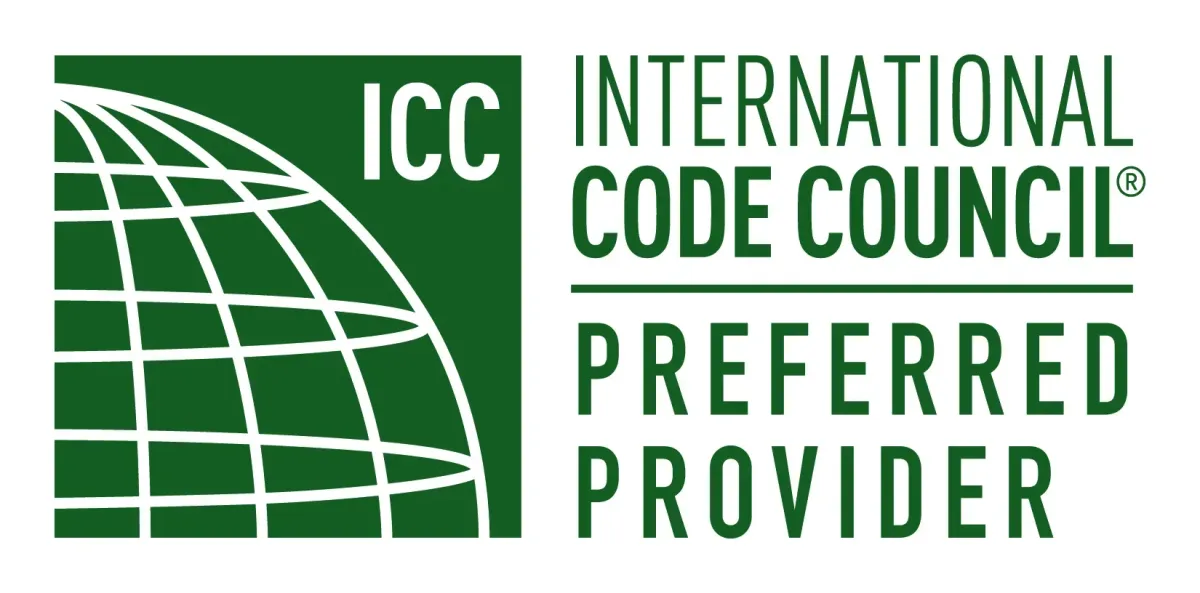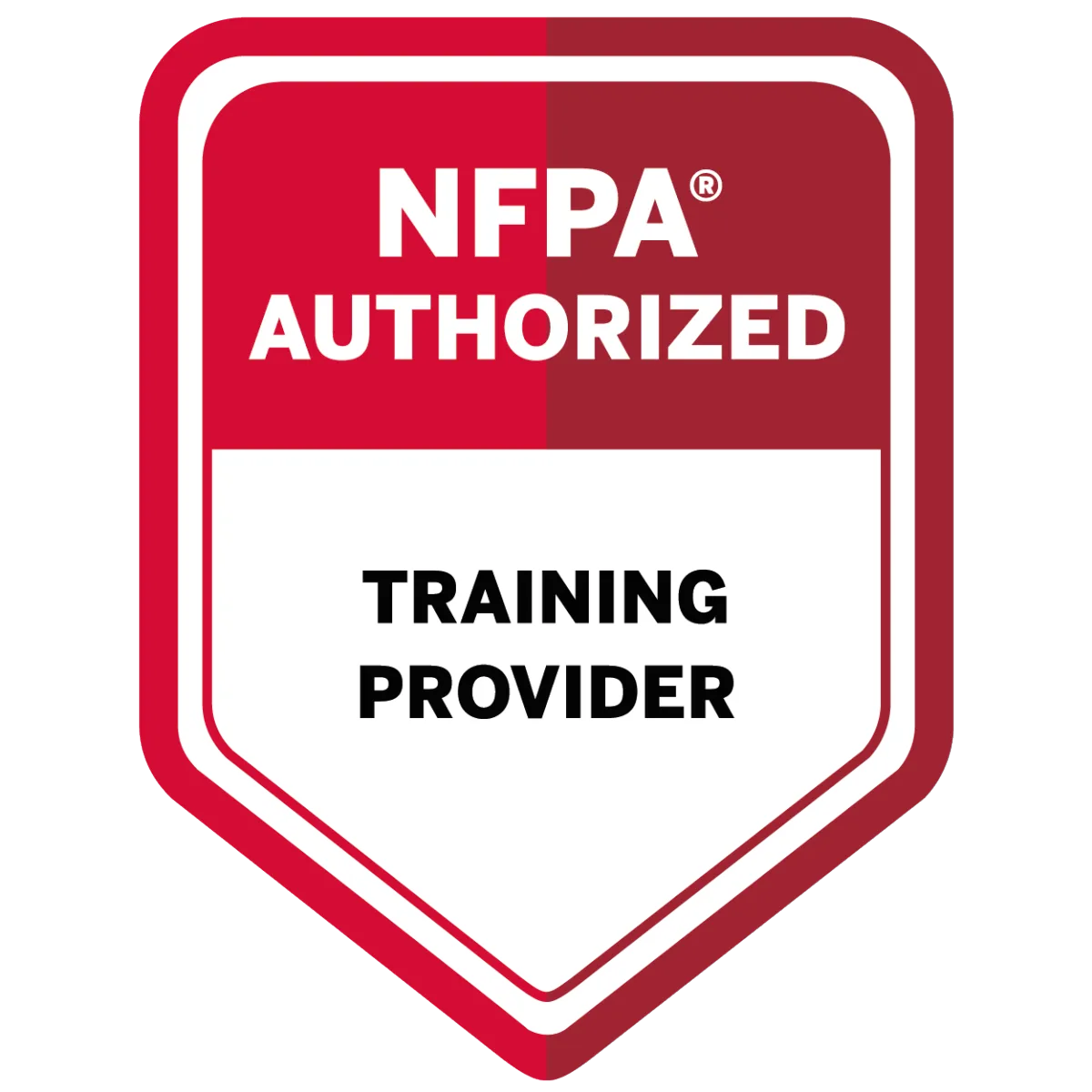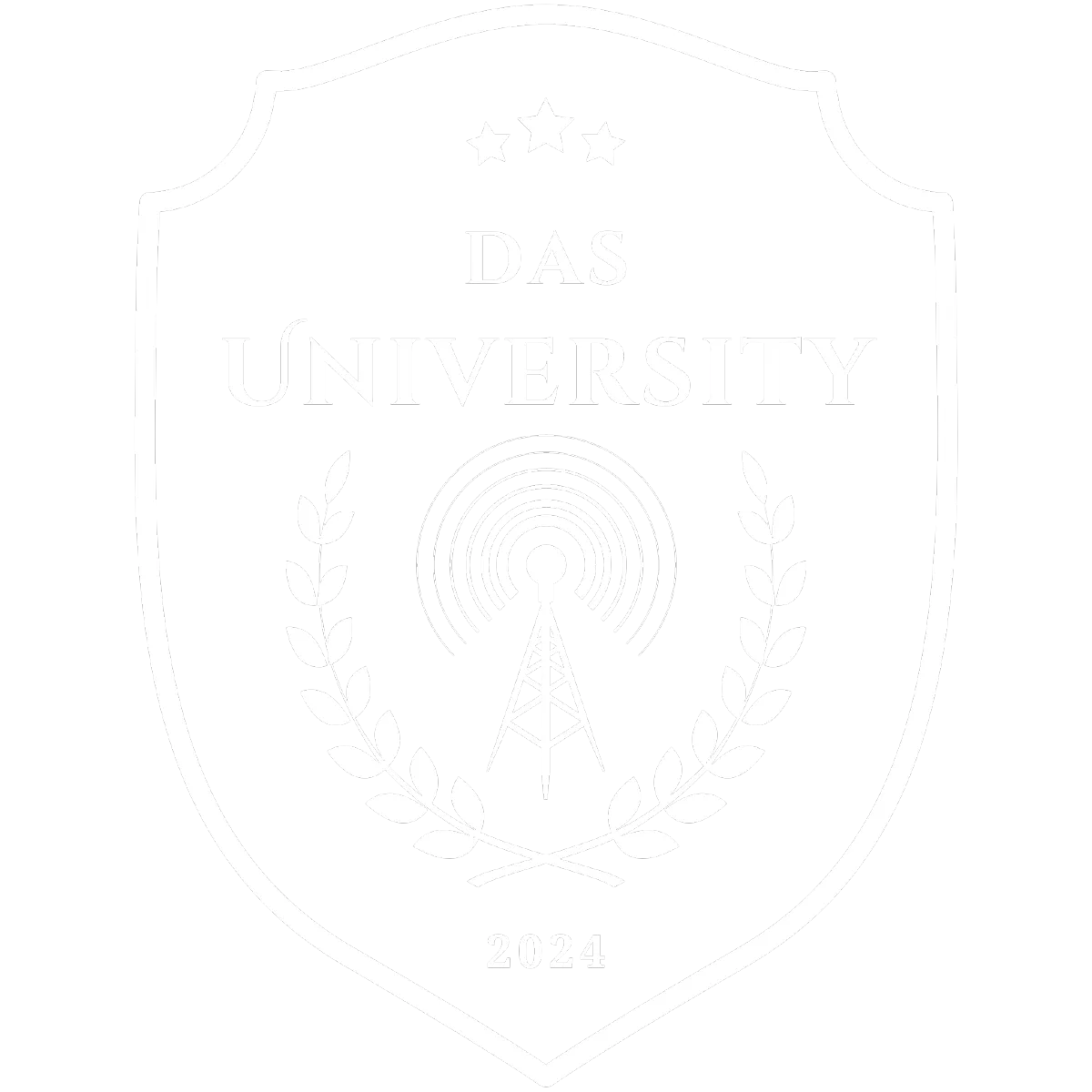WERE GOING ON TOUR!
JOIN THE DAS UNIVERSITY LIVE SUMMIT
2026 TRAINING CAMP TOUR
11 CAMPS NATION WIDE
Presented by GAMMA, BEST Ent. Mobili-fi and Industry Experts
Explore Our Unique Educational Platform
Join thousands of safety professionals, fire marshals, inspectors, integrators, and builders who are mastering the skills to install, certify, and inspect mission-critical in-building radio systems. With on-demand training, you can learn at your pace, apply it in the field, and start making buildings safer immediately.
Upgrade to our premium platform and gain the ability to earn DAS University training certificates and ICC continuing education credits for every hour of training completed. Whether you’re advancing your career, meeting code compliance requirements, or training your team, DAS University provides the recognition and real-world knowledge you need to lead with confidence.

Virtual Learning Environment
Step into our cutting-edge
virtual learning spaces, equipped with the latest tools and resources tailored for
DAS ERCES training. Experience live webinars, interactive certificate courses, and real-time collaboration with peers and instructors, ensuring an engaging and hands-on educational journey.

Professional Development
We train you on what matters: real installation standards, testing protocols, and life-saving communication system design. Our expert-led courses help you
earn DAS University training certificates, connect to job placement pipelines, and gain the confidence to lead projects with AHJs, architects, and public safety officials.

Global and Inclusive Community
Join a powerful network of safety-first professionals from across the country and around the world. With 24/7 access to our online campus, and a shared mission to protect lives, you’re never learning alone. DAS University is your community for growth, connection, and career elevation.
AUTHORIZED TRAINING PARTNERS OF THE BELOW ORGANIZATIONS

Earn CEU credits for every course on our Premium platform


About DAS University
Pioneering the Future of Education
At DAS University, we are redefining the educational landscape by integrating state-of-the-art technology with personalized learning experiences. Our mission is to empower students globally with the skills and knowledge necessary to excel in the fast-growing fields of
Distributed Antenna Systems (DAS) and Emergency Responder Communication Enhancement Systems (ERCES).
Through a blend of expert-led training courses, real-world applications
, and a supportive community, we provide an unparalleled learning journey for professionals and beginners alike.
Whether you're pursuing ERCES training, exploring advanced DAS education, or preparing for real-world challenges, we ensure you’re equipped for success. Join DAS University and transform your potential into leadership in the industry.
Achieve Training Certificates at DAS University
Elevate your professional profile with our highly regarded
DAS and ERCES training courses. Designed to provide both foundational and advanced expertise, these programs prepare you for real-world challenges in the
DAS and in-building communications industry.
Gain cutting-edge knowledge, practical skills, and DAS University training credentials to advance your career in public safety communications, emergency responder technologies, and beyond.
Hands-on project submissions
Industry-recognized guest speakers
Collaboration with 30+ industry partners
Real-time system testing simulations
Access to exclusive ERCES webinars
Unlock Your Career Potential with DAS University Training Certificates
Our DAS and ERCES training certificates document your completion—they open doors to new professional opportunities in the growing field of in-building communication systems.
Our training program participants develop practical skills for the industry, DAS University powered by Gamma is your gateway to professional growth and success. Whether you’re aiming for job placements, advanced career counseling, or building connections within a robust network of industry leaders, our programs are designed for your advancement.
Sign up now for FREE and start your journey toward professional excellence with DAS University!

Addressing Interference in In-Building Wireless Systems
In-building wireless systems are critical for ensuring seamless communication within various structures, from office buildings to hospitals and public safety facilities. However, one of the primary challenges these systems face is interference, which can significantly degrade signal quality and reliability. At DAS University, we emphasize the importance of understanding and addressing interference to maintain optimal performance in wireless networks. This blog post explores the sources of interference, its impact, and strategies to mitigate it.
Understanding Interference
Interference in wireless systems occurs when unwanted signals disrupt the transmission and reception of communication signals. This disruption can result in poor signal quality, dropped connections, and reduced overall network performance. There are several types of interference, including:
Co-Channel Interference: Occurs when two or more transmitters operate on the same frequency channel, leading to signal overlap and degradation.
Adjacent Channel Interference: Arises from signals on nearby frequency channels spilling over into the desired channel.
Intermodulation Interference: Caused by the mixing of signals from different frequencies, creating new, unwanted frequencies.
Environmental Interference: Includes physical obstructions and materials that can block or reflect signals, such as walls, furniture, and metallic objects.
Common Sources of Interference
Electronic Devices: Other wireless devices like Wi-Fi routers, Bluetooth gadgets, and cordless phones can create interference.
Building Materials: Concrete, metal, and low-emissivity glass can obstruct or reflect wireless signals, causing interference.
External Sources: Nearby cell towers, broadcast antennas, and other external wireless systems can contribute to interference within buildings.
Structural Design: Complex building layouts with multiple floors and dense walls can create areas where signals weaken or overlap, leading to interference.
Impact of Interference
Interference can have several negative impacts on in-building wireless systems, including:
Reduced Signal Quality: Interference can cause signal degradation, leading to poor voice quality, slow data speeds, and increased latency.
Dropped Connections: Frequent disconnections can occur when the signal is consistently interrupted by interference.
Increased Noise Levels: Higher noise levels in the network can reduce the clarity and reliability of communication.
Lower Network Capacity: Interference can limit the number of users and devices that the network can support simultaneously.
Strategies to Mitigate Interference
Conduct a Thorough Site Survey
Importance: A comprehensive site survey helps identify sources and areas of interference within the building.
Tools: Use spectrum analyzers and other specialized tools to map signal strength and detect interference sources.
Outcome: The survey results will guide the placement of antennas and other equipment to minimize interference.
Frequency Planning and Management
Channel Allocation: Carefully plan and allocate frequency channels to avoid co-channel and adjacent channel interference.
Frequency Coordination: Coordinate with other nearby wireless systems to ensure there is no overlap or interference between networks.
Implement Shielding Techniques
Physical Barriers: Use physical barriers, such as metal enclosures or shielding materials, to isolate and protect critical areas from interference.
Absorptive Materials: Incorporate materials that absorb rather than reflect wireless signals to reduce the impact of environmental interference.
Optimize Antenna Placement
Strategic Locations: Place antennas in optimal locations to ensure strong coverage while minimizing interference from other devices and structures.
Directional Antennas: Use directional antennas to focus the signal in specific areas, reducing the likelihood of interference from unwanted directions.
Utilize Advanced Technologies
MIMO Technology: Multiple Input Multiple Output (MIMO) technology uses multiple antennas to transmit and receive more data simultaneously, reducing the impact of interference.
Beamforming: Beamforming technology focuses the wireless signal towards specific devices, enhancing signal strength and reducing interference.
Adaptive Filtering: Implement adaptive filtering techniques to detect and mitigate interference dynamically.
Regular Monitoring and Maintenance
Ongoing Monitoring: Continuously monitor the network using real-time tools to detect and address interference issues promptly.
Routine Maintenance: Perform regular maintenance on all network components to ensure they are functioning correctly and not contributing to interference.
Educate Users
Awareness Programs: Educate users about the potential sources of interference and how to minimize them, such as reducing the use of non-essential wireless devices.
Guidelines: Provide guidelines for optimal device placement and usage to minimize interference within the building.
Conclusion
Addressing interference in in-building wireless systems is crucial for maintaining reliable and high-quality communication. By understanding the sources and types of interference, and implementing effective mitigation strategies, network administrators can ensure optimal performance and user satisfaction. At DAS University, we are dedicated to equipping professionals with the knowledge and skills needed to tackle interference challenges and optimize wireless networks. Join us to learn more about advanced wireless communication strategies and become a leader in creating interference-free environments.
Hear Directly from Our Students: Real Stories, Real Success
Discover the impact of DAS University through the voices of our students. From groundbreaking education to career breakthroughs, our learners share their journeys and the transformative experiences they've encountered.

DAS University not only taught me the technical skills needed for advanced DAS systems but also how to apply them effectively in real-world scenarios. The network I’ve built through the university’s alumni connections has opened up numerous opportunities for collaboration and growth.

Raj Patel

The DAS training certificate has been beneficial for my career. The practical knowledge and hands-on training I received have allowed me to transition into a higher role within my company. The support and expert advice from faculty were invaluable.

Emily Nguyen

Enrolling at DAS University was one of the best decisions I've made for my professional development. The interactive courses and live sessions with industry experts have greatly enhanced my understanding and confidence in handling complex projects in my field.

Albert Dubois
Start Your Journey at DAS University Today
Embark on a transformative path of discovery and professional growth with our cutting-edge
DAS and ERCES training courses and a vibrant academic community. At DAS University, we provide the tools, resources, and industry connections to help you not just meet but exceed your career aspirations in the fields of
Distributed Antenna Systems (DAS) and Emergency Responder Communication Enhancement Systems (ERCES).
Whether you’re aiming to gain DAS University training certificates, explore real-world applications, or network with industry professionals, DAS University is here to turn your potential into measurable success.
Our Latest Articles

Addressing Interference in In-Building Wireless Systems
In-building wireless systems are critical for ensuring seamless communication within various structures, from office buildings to hospitals and public safety facilities. However, one of the primary challenges these systems face is interference, which can significantly degrade signal quality and reliability. At DAS University, we emphasize the importance of understanding and addressing interference to maintain optimal performance in wireless networks. This blog post explores the sources of interference, its impact, and strategies to mitigate it.
Understanding Interference
Interference in wireless systems occurs when unwanted signals disrupt the transmission and reception of communication signals. This disruption can result in poor signal quality, dropped connections, and reduced overall network performance. There are several types of interference, including:
Co-Channel Interference: Occurs when two or more transmitters operate on the same frequency channel, leading to signal overlap and degradation.
Adjacent Channel Interference: Arises from signals on nearby frequency channels spilling over into the desired channel.
Intermodulation Interference: Caused by the mixing of signals from different frequencies, creating new, unwanted frequencies.
Environmental Interference: Includes physical obstructions and materials that can block or reflect signals, such as walls, furniture, and metallic objects.
Common Sources of Interference
Electronic Devices: Other wireless devices like Wi-Fi routers, Bluetooth gadgets, and cordless phones can create interference.
Building Materials: Concrete, metal, and low-emissivity glass can obstruct or reflect wireless signals, causing interference.
External Sources: Nearby cell towers, broadcast antennas, and other external wireless systems can contribute to interference within buildings.
Structural Design: Complex building layouts with multiple floors and dense walls can create areas where signals weaken or overlap, leading to interference.
Impact of Interference
Interference can have several negative impacts on in-building wireless systems, including:
Reduced Signal Quality: Interference can cause signal degradation, leading to poor voice quality, slow data speeds, and increased latency.
Dropped Connections: Frequent disconnections can occur when the signal is consistently interrupted by interference.
Increased Noise Levels: Higher noise levels in the network can reduce the clarity and reliability of communication.
Lower Network Capacity: Interference can limit the number of users and devices that the network can support simultaneously.
Strategies to Mitigate Interference
Conduct a Thorough Site Survey
Importance: A comprehensive site survey helps identify sources and areas of interference within the building.
Tools: Use spectrum analyzers and other specialized tools to map signal strength and detect interference sources.
Outcome: The survey results will guide the placement of antennas and other equipment to minimize interference.
Frequency Planning and Management
Channel Allocation: Carefully plan and allocate frequency channels to avoid co-channel and adjacent channel interference.
Frequency Coordination: Coordinate with other nearby wireless systems to ensure there is no overlap or interference between networks.
Implement Shielding Techniques
Physical Barriers: Use physical barriers, such as metal enclosures or shielding materials, to isolate and protect critical areas from interference.
Absorptive Materials: Incorporate materials that absorb rather than reflect wireless signals to reduce the impact of environmental interference.
Optimize Antenna Placement
Strategic Locations: Place antennas in optimal locations to ensure strong coverage while minimizing interference from other devices and structures.
Directional Antennas: Use directional antennas to focus the signal in specific areas, reducing the likelihood of interference from unwanted directions.
Utilize Advanced Technologies
MIMO Technology: Multiple Input Multiple Output (MIMO) technology uses multiple antennas to transmit and receive more data simultaneously, reducing the impact of interference.
Beamforming: Beamforming technology focuses the wireless signal towards specific devices, enhancing signal strength and reducing interference.
Adaptive Filtering: Implement adaptive filtering techniques to detect and mitigate interference dynamically.
Regular Monitoring and Maintenance
Ongoing Monitoring: Continuously monitor the network using real-time tools to detect and address interference issues promptly.
Routine Maintenance: Perform regular maintenance on all network components to ensure they are functioning correctly and not contributing to interference.
Educate Users
Awareness Programs: Educate users about the potential sources of interference and how to minimize them, such as reducing the use of non-essential wireless devices.
Guidelines: Provide guidelines for optimal device placement and usage to minimize interference within the building.
Conclusion
Addressing interference in in-building wireless systems is crucial for maintaining reliable and high-quality communication. By understanding the sources and types of interference, and implementing effective mitigation strategies, network administrators can ensure optimal performance and user satisfaction. At DAS University, we are dedicated to equipping professionals with the knowledge and skills needed to tackle interference challenges and optimize wireless networks. Join us to learn more about advanced wireless communication strategies and become a leader in creating interference-free environments.
Frequently Asked Questions
What makes DAS University different from traditional educational institutions?
DAS University combines expert-led courses, dynamic online interactions, and live events to create a comprehensive and interactive learning experience that goes beyond traditional classroom boundaries.
How does the subscription model work at DAS University?
Our subscription model offers unlimited access to all courses and resources on the platform, allowing students to learn at their own pace and according to their own schedules. Enjoy a FREE version and premium version
What types of courses does DAS University offer?
We offer a wide range of courses focused on Distributed Antenna Systems (DAS), including basics of radio frequency, system design, and emergency responder communication enhancement systems, among others.
Can I interact directly with instructors and guest speakers?
Yes, our platform includes real-time chat, discussion forums, and weekly live Zoom sessions where students can engage directly with instructors and industry experts.
What are the career opportunities after completing courses at DAS University?
Completing courses at DAS University can lead to various roles in the DAS industry, such as system integrator, radio technician, and various positions in emergency response, depending on the course.
How do I access the digital library?
The digital library is available through the Campus portal, where students can access research papers, case studies, e-books, and multimedia resources related to their courses.
What is included in the certification from DAS University?
Training certificates include your name, course title, completion date, unique certificate number, and document your completion of DAS University training programs
How can I participate in special interest groups and clubs?
Students can join various groups and clubs through the Campus portal, allowing them to connect with peers who share similar interests and professional goals. Premium Version only
Are there resources for hands-on learning in DAS University courses?
Yes, we provide simulation tools and virtual labs for hands-on experience, as well as gamified learning modules to make complex concepts more engaging. Only available in the Premium version.
What support is available if I encounter difficulties in my coursework?
The Feedback and Support Center offers direct access to faculty and technical support to assist with any course-related inquiries.
How does DAS University accommodate international students?
We offer 24/7 campus access and multilingual support to ensure that students from all time zones and linguistic backgrounds can fully participate.
What is the process for obtaining certification at DAS University?
To obtain a training certificate, students must complete all modules, pass the final assessment with a required minimum score, and actively participate in live sessions and forums. Only available in the Premium version.
Can I share my certification on professional networks?
Yes, upon completion, students receive both a physical training certificate and a digital badge that can be shared on LinkedIn and other professional networks. Only available in the Premium version.
What are the live webinar auditoriums used for?
The auditoriums host weekly live sessions with guest speakers and industry pofessionals, featuring interactive Q&A sessions and panel discussions.
What tools are available for career development at DAS University?
Our Career Center provides career counseling, resume workshops, job postings, and an alumni network for mentorship and professional connections. Only available in the Premium version.
How can I track my course progress and assessments?
The Certification Portal on our platform allows students to track their progress, assessments, and training certificate status.
What kind of assessments are used in DAS University courses?
Assessments include quizzes, assignments, project submissions, and a final examination to comprehensively test understanding and practical application.
How can I continue learning after completing my courses?
Certificate holders are encouraged to participate in advanced courses, seminars, and periodic refresher courses to keep their knowledge current.
Are there opportunities for networking within the DAS University community?
Yes, training certificate completion grants access to an alumni network, facilitating peer interactions, knowledge sharing, and networking opportunities. Only available in the Premium version.
How do I provide feedback on my learning experience?
Students can provide feedback through forums in the Feedback and Support Center, helping us to continually improve the campus experience.


